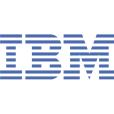 IBM (NYSE: IBM), in collaboration with the Genome Institute of Singapore (GIS), today revealed results from a joint research study that could potentially alter our views of how cell processes are regulated.
IBM (NYSE: IBM), in collaboration with the Genome Institute of Singapore (GIS), today revealed results from a joint research study that could potentially alter our views of how cell processes are regulated. The two teams have discovered that microRNAs, small molecules that are an important regulatory component in the machinery of living cells, likely exert their influence much more widely than previously thought.
Extensive experiments conducted by the GIS validate findings generated by a mathematical model developed by the IBM team. The work is expected to provide insight on microRNA-based regulation in diseases such as cancers, neurodegenerative disorders, diabetes and others, and to suggest possible avenues for novel diagnostics and the development of therapeutics.
"Our collaboration with the GIS team illustrates the increasing impact that joint work between computational scientists and biologists can have in facilitating advances in basic biology," said Isidore Rigoutsos, Manager of the Bioinformatics Group in IBM Research's Computational Biology Center.
"The scientific community continues to reveal the increasing importance of microRNAs in determining a cell's type and function. This joint effort is generating new insights regarding the function of these molecules," said Bing Lim, Leader of the Stem Cell Biology Group at GIS.
The results, which are reported in today's issue of the journal Cell, suggest that some microRNAs may exert their influence by targeting as many as a few thousand messenger RNAs (the intermediate forms from which proteins are made), and that nearly all genes in higher organisms such as humans or mice may be under microRNA control. The analysis also suggests that likely tens of thousands of microRNAs remain to be identified. These results propose a significantly expanded view of microRNAs' influence within a cell and their potential roles in health and disease.
The report on this work, "A pattern-based method for the identification of microRNA binding sites and their corresponding heteroduplexes," by Miranda K., Huynh T., and Rigoutsos I. of IBM T.J. Watson Research Center, Yorktown Heights, NY; Tay Y., Ang Y.S., Tam W.L., Thomson A., and Lim B. of Genome Institute of Singapore, is published in the September 22nd issue of the journal Cell.




No comments:
Post a Comment